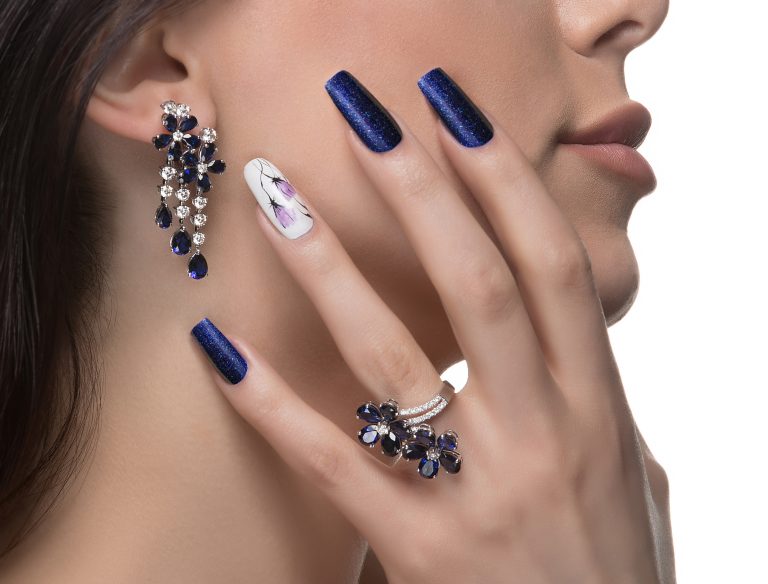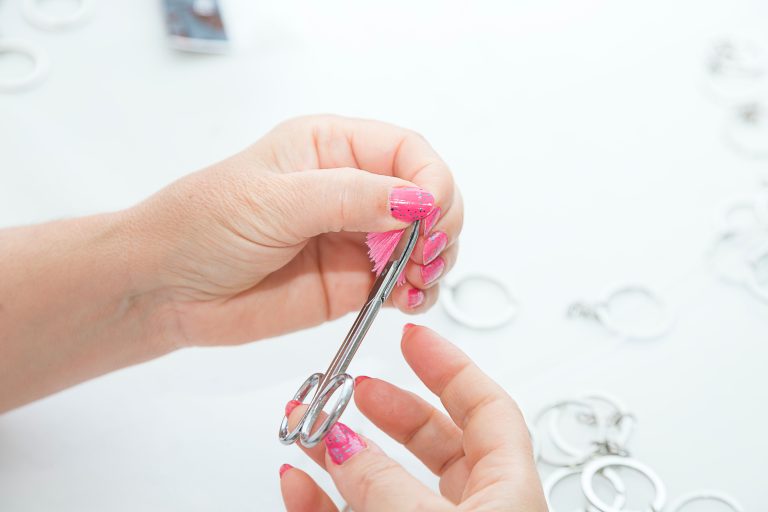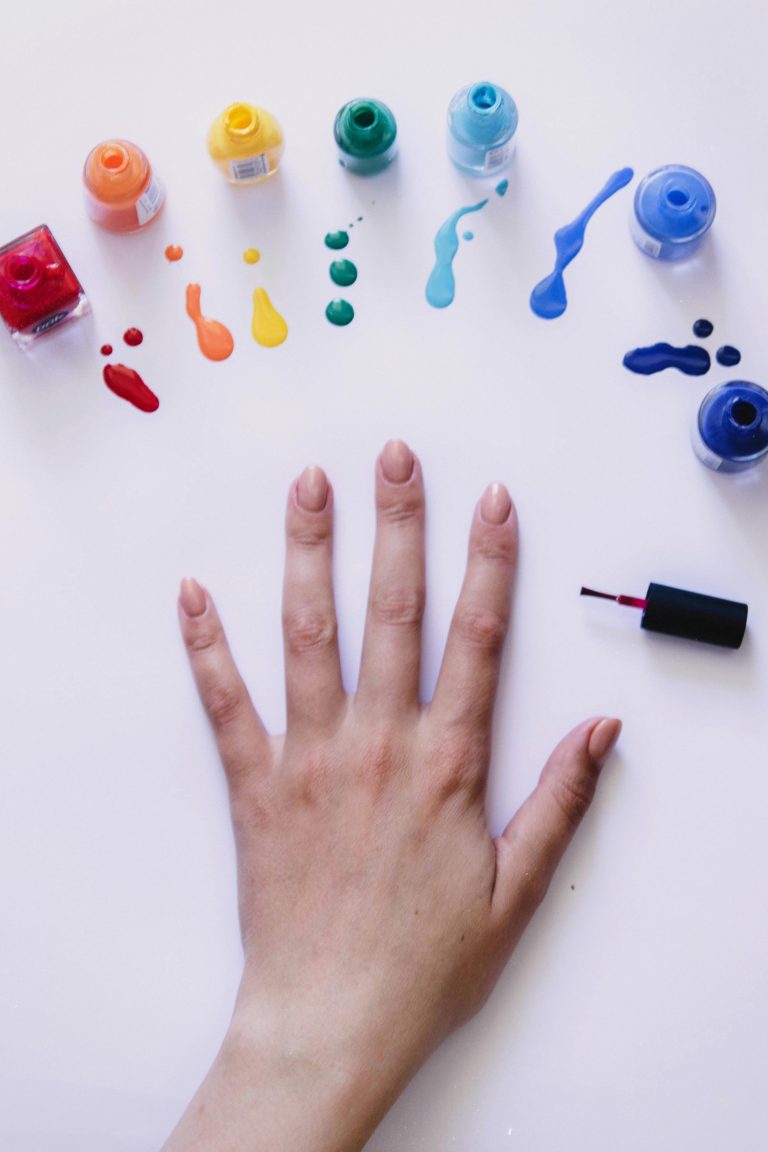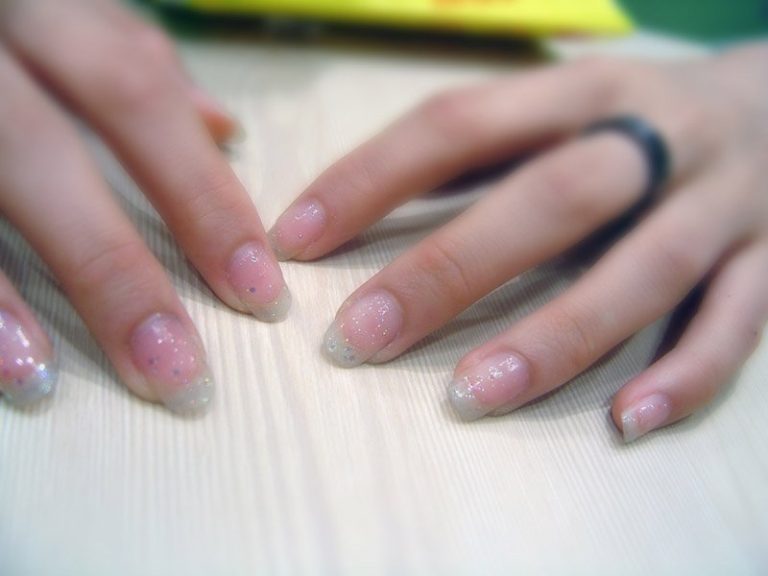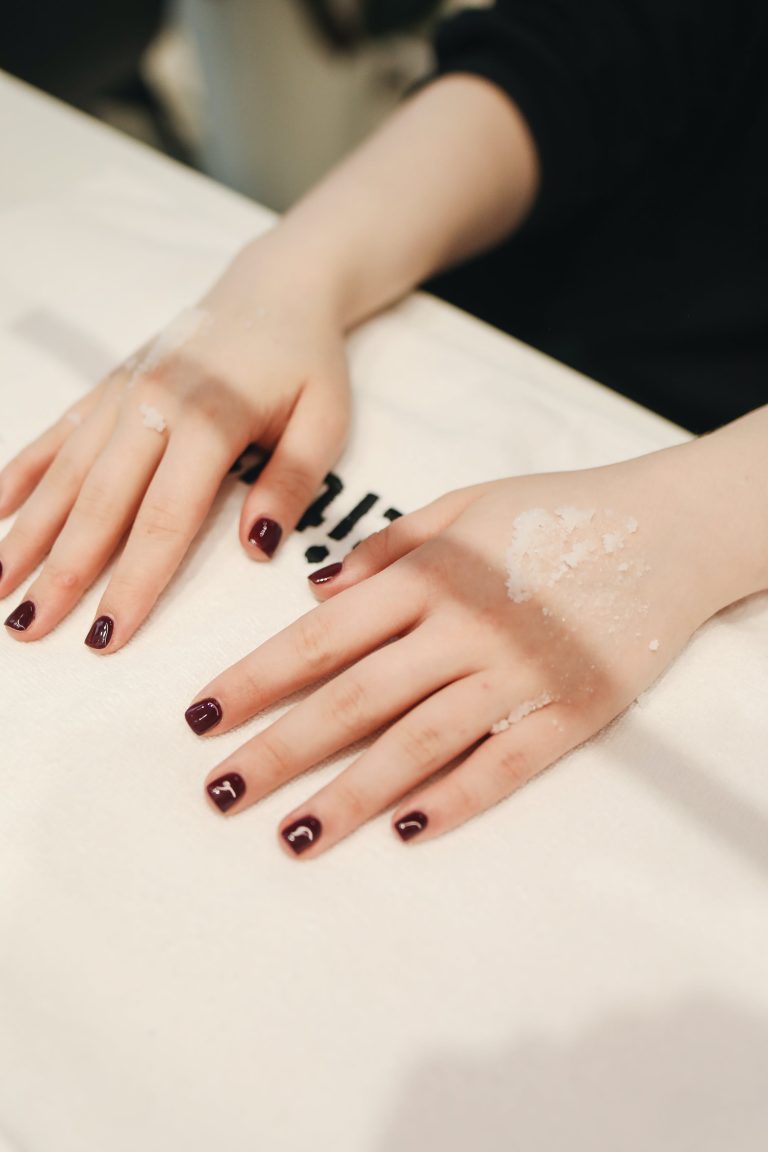Any nail art lover consider these gadgets as appendages of their creative imagination. There are different types of implements that include brushes, dotting tools, stamping plates, among others which help in adding detailed designs and vivid colors. Nevertheless, just like any other utensils, taking good care of them will guarantee they serve optimally and will stay for long.
The importance of correct tool maintenance.
Neglecting your nail art tools can lead to several problems:
• Reduced performance: Dried up polish residue clogs brush bristles making them stiff and hard to control. This may result in uneven distribution and ultimately, undesirable outcomes.
• Shorter lifespan: Inappropriate washing might ruin your tools quality. The metal parts can rust, the delicate brushes can lose their shape, or stamping plates may get scratched.
• Hygiene concerns: Dirty tools could support growth of bacteria and fungi thus posing risk to one’s health. Hygiene and prevention of infections require regular cleaning.
Prolonging the Lifespan of Your Nail Art Tools
By following a simple daily cleaning routine and occasional deep cleaning, you can ensure your nail art tools remain in optimal condition for extended use:
Daily Cleaning Routine-Cleaning and Maintaining Nail Art Tools
Quick Wipe Down after Each Use:
Brushes: When done, use a lint-free wipe or a paper towel to wipe off excess polish. Hence, a brush cleaner for acrylic gel polish should be designated.
Other Tools: Dotting tools, stamping plate and other metal implements that are cleaned using a damp cloth or alcohol cleaning wipe are necessary in removing the residual polish.
Inspecting Tools for Residue and Build-Up:
Make sure that you keep on checking your tools for dry polish and other stuff that may have been gathered therein. Use a brush cleaner or acetone to remove the rest of the hardened stains.
Deep Cleaning:
• Brushes: Do a deep clean once a week for your brushes. Let them soak for 10-15 minutes in a brush cleaner or warm soapy water. Shake them out and then reshape each bristle using your finger and finally lay them flat to dry.)
• Metal Tools: Using a mild solution of warm soapy water, gently clean the metal tools using a soft sponge. Using a lint-free cloth, dry them completely, rust can occur.
• Stamping Plates: Wash stamping plates with acetone or a stamping plate cleaner. Coat the surface with a thin layer of baby oil to keep it from being scratched.
Storage:
Store your tools in a clean and dry location which is free from sunshine and dust. The brush can be placed vertically in a container or on hooks by their handles. A drawer or an organizer is necessary for metal tools and stamping plates.
Additional Tips:
• Do not expose them to rough and corrosive substances.
• Do not go about choosing or tugging brush bristles.
• Trim loose or frayed bristles often.
• Quickly replace damaged or worn out tools.
Through the outlined procedure, you will be preserving your nails arts tools to design beautiful nails for many years ahead. Please note that having your tools is an investment into your craftsmanship. It is also a way of acknowledging that your tool helped you express yourself artistically.

Weekly Deep Clean-Cleaning and Maintaining Nail Art Tools
A weekly deep clean is necessary to remove thick residue and bacteria from your nail art tools. Such a process takes longer and yet it is essential for sustaining the operational capability and durability of your equipment.
A. Disassembling and Cleaning Nail Art Brushes
Soaking in Acetone for Stubborn Residue:
• When using the brush with acrylic polish or gel you must soak them off in acetone of hardened residue.
• Pour some acetone into another small glass container having a glass stopper.
• Use one hand to softly pull the brush away from the handle to detach it.
• Let the brushhead stay in the acetone for 10-15 minutes.
• Soak just the bristles and do not saturate the whole brush in a way that destroys its handle.
• Clean off the softened residue with a brush cleaner or a lint-free wipe.
• Always make sure you wash the brush well and then reshape it by fingers.
• Lay it with its usual set up on a paper towel as it dries completely.
Brush Bristle Inspection for Damage:
• Ensure the brush is in good condition, i.e., the bristles are not cut or frayed.
• Snip the loose and split ends with a pair of sharp scissors.
• Ensure you don’t cut too much because this could have a negative impact on the shape and function of your haircut.
• In such a case, it is better to replace the brush since the bristles have already been damaged to that extent.
Scrubbing and Sanitizing Non-Brush Tools-Cleaning and Maintaining Nail Art Tools
Detailing Brushes and Dotting Tools:
• Detail brushes and dotting tools should be wet brushed with cleaner or wash with soap and water.
• Ensure you focus on the tip and edges of the utensils where residues get accumulated.
• Wipe clean, rinse and dry off completely with lint-free wipe.
• Immerse the tools in acetone for 10 minutes so as to flush out stubborn residue.
Tweezers, Scissors, and Other Accessories:
• Use a soft-bristled sponge and soapy water on them.
• Wash and dry with a linen cloth.
• Clean metal instruments with alcohol swabs, an equal mix of rubbing alcohol and water or with any other sterile solution.
• Use warm soapy water and a soft toothbrush to rinse away any dirt or debris from plastic tools.
• Wipe and rinse clean with a lint free cloth.
Additional Tips:
• Avoid contamination by using separate containers for clean tools and dirty tools.
• Wear gloves when working with acetone and avoid skin contact.
• Do not use hot water on plastic tools as they tend to warp.
• Clean all your tools deeply and ensure you keep them in a clean and dry place.
This way your nail tools will always be clean enough to help you create nice-looking nails that will stay with you for years to come.
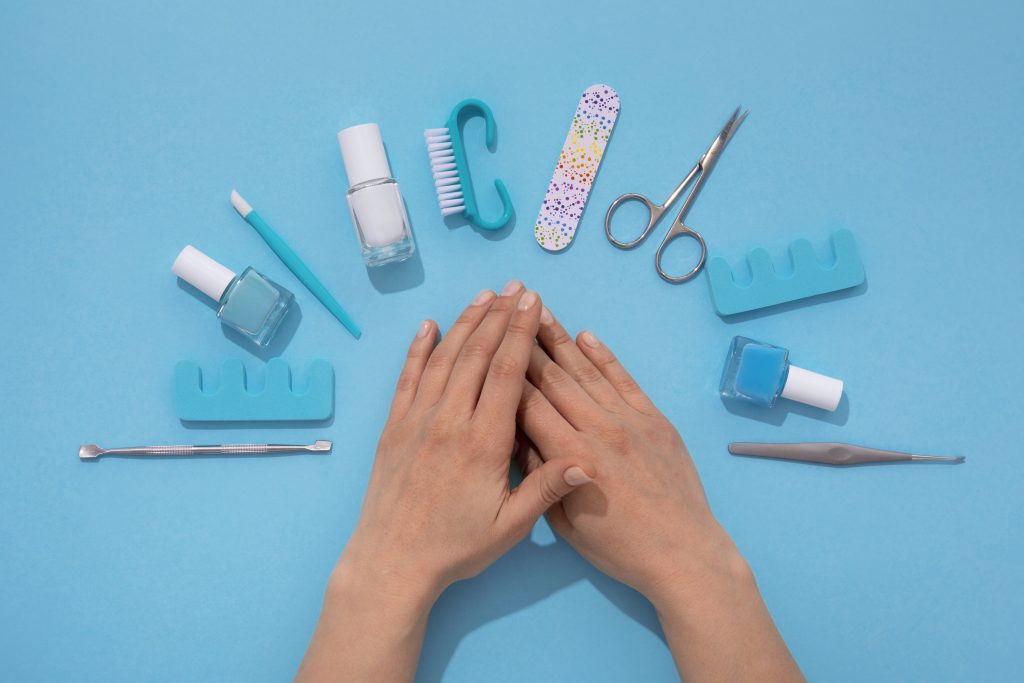
Proper Storage Techniques-Cleaning and Maintaining Nail Art Tools
Once they are clean and free of moisture, care is needed to avoid losing freshness from them. Here are some techniques to ensure your tools remain in top condition:
Dedicated Compartments for Each Tool
• Purchase a specialized storage container with individual compartments for each tool.
• It is necessary to ensure that they are not clinked together to avoid damage.
• Brushes must be kept upright in a well-ventilated bucket to ensure that no moisture forms on them and causes mold.
• This refers to the metal tweezers, scissors and cuticle pushers that can be stored in a drawer or in an organizer consisting of different compartments.
• The stamping plates must be kept flat, without any scratches. One should have a dedicated storage case or a padded sleeve.
Preventing Tools from Touching to Avoid Damage-Cleaning and Maintaining Nail Art Tools
• Keep all your tools together but separated from each other to prevent rubbing.
• This may result into the scratches, chipping, and breakage of the bristles or fragile areas.
• Separate tools with dividers or compartments.
• Protect wrap brushes in tissue paper or soft cloth.
Rust Prevention for Metal Tools-Cleaning and Maintaining Nail Art Tools
They may rust easily unless they’re completely dried up when cleaned. Here are some ways to prevent rust and preserve your tools:
Always make sure to dry metal tools correctly after cleaning.
• Allow metal tools to dry completely after wiping them with a damp cloth or alcohol swab and then store them.
• Allow them to air dry for several minutes or wipe clean with a lint-free piece of cloth to eliminate extra moisture.
• Ensure that you do not store wet or damp tools as this will result to high humidity levels that can quickly cause rusting.
Light Oil Coating for Protection-Cleaning and Maintaining Nail Art Tools
• After they have dried, apply a thin layer of mineral oil or baby oil on the metal tools for extra protection.
• This will allow prevent accumulation of water and its subsequent rusting.
• Rub the oil on the metal surface as lightly as possible, making sure to remove any leftovers.
• Oils should not be used on brushes since they make the bristles soft leading to poor performance of the brushes.
As such, following the above simple storage and rust prevention tips can help you avoid a situation where you find your metal nail art tools rusted. However, caring for your tools is an essential component that you cannot afford to neglect if you want to have breathtaking results.
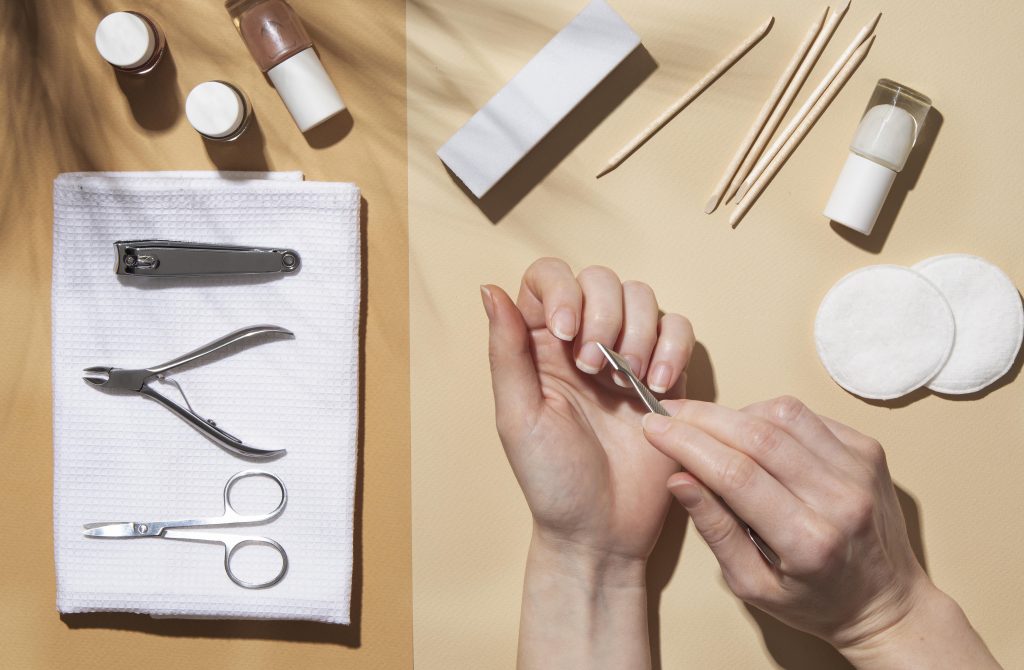
Brush Conditioning and Revitalization-Cleaning and Maintaining Nail Art Tools
Despite cleaning it over a period, the nail art brush may get stiff or misshapen affecting its performance hence hard to handle. Fortunately, you can condition and refresh your brushes, turning them soft again so you will be able to draw impeccable nail drawings.
Keeping Brushing Softness through conditioner-Cleaning and Maintaining Nail Art Tools
By keeping your brushes in good condition you will maintain their softness and flexibility. Here’s how:
Choose the right conditioner: For instance, use of a soft hair conditioner or a cleanser for hair conditioners specially designed for manicure brushes. Stay away from harsh chemicals and those containing alcohol as they may ruin the bristles.
Prepare the brush: Ensure you wash the brush well using warm water to remove any debris which might be there. Dab lightly with a dry cloth.
Apply conditioner: Put some conditioner on the bristles, then use your fingers to gently work it in. Note the point and the corners.
Leave it in: Let the conditioner stay for some minutes on the bristles to go deeper into softening them.
Rinse and reshape: Wash the brush under warm water and reshape the bristles between fingers.
Air dry: Allow it to dry fully by placing it flat on a paper towel. Avoid excessive heat as it could make the bristles brittle.
Additional tips:
• Reconditioning should be done once a week or on an on-demand basis.
• Ensure that you store your brushes with their bristles facing up for them not to dry up and become stiffened.
• You may want to cover the bristles with brush guards or caps so that the same are not damaged by dust and dirt.
Conclusion-Cleaning and Maintaining Nail Art Tools
Taking good care of your nail art tools is important when it comes to upholding your artistry and getting beautiful outcomes. If you adhere to these guidelines, your tools will be cleaned, functional, and good for a while. Also, remember regular maintenance, storage of valuable tools and cleaning of your tools is essential if you want to achieve high quality nail art.
FAQs
Q: How regularly ought to I smooth my nail art tools?
• Daily: Wipe down brushes and other gear after every use with a lint-free wipe or paper towel.
• Weekly: Deep smooth all brushes and non-brush tools using the techniques described in this guide.
• As wanted: Disinfect tools with alcohol swabs or a solution of identical parts water and rubbing alcohol if you have any worries approximately hygiene.
Q: What kind of brush cleaner should I use?
• There are many brush cleaners available particularly for nail art brushes. Choose one this is gentle and formulated for the type of polish you use (acrylic, gel, and so on.).
• You can also use moderate hair conditioner as a brush cleaner.
Q: How can I prevent my steel equipment from rusting?
• Dry your steel tools thoroughly after cleaning.
• Apply a skinny coat of mineral oil or baby oil to guard them from moisture.
• Store your steel equipment in a dry area faraway from direct sunlight.
Q: How can I restore my brushes if they come to be stiff or misshapen?
• Use a slight hair conditioner or a broom cleaner to melt the bristles.
• Gently reshape the brush tip along with your hands or a broom comb.
• Avoid slicing the bristles, as this could completely damage the comb.
